


Venice (Italian: Venezia, Venetian: Venesia or Venexia) is a city in northern Italy, the capital of the region Veneto, and has a population of 271,251 (census estimate January 1, 2004). Together with Padua, the city is included in the Padua-Venice Metropolitan Area (population 1,600,000). Venice has been known as the "La Dominante", "Serenissima", "Queen of the Adriatic", "City of Water", "City of Bridges", and "The City of Light". It is considered by many to be one of the most beautiful cities in the world.
The city stretches across 118 small islands in the marshy Venetian Lagoon along the Adriatic Sea in northeast Italy. The saltwater lagoon stretches along the shoreline between the mouths of the Po (south) and the Piave (north) Rivers. The population estimate of 272,000 inhabitants includes the population of the whole Comune of Venezia; around 62,000 in the historic city of Venice (Centro storico); 176,000 in Terraferma (the Mainland), mostly in the large frazione of Mestre and Marghera; and 31,000 live on other islands in the lagoon.
The Venetian Republic was a major maritime power during the Middle Ages and Renaissance, and a staging area for the Crusades and the Battle of Lepanto, as well as a very important center of commerce (especially silk, grain and spice trade) and art in the 13th century up to the end of the 17th century.
Etymology
The name is connected with the people known as the Veneti (perhaps the same as the (W)enetoi mentioned by Homer). The meaning of the word is uncertain. Connections with the Latin word 'venire' (to come) or (Slo)venia are fanciful. A connection with the Latin word venetus, meaning 'sea-blue' is possible.
Origins and history
While there are no historical records that deal directly with the origins of Venice, the available evidence has led several historians to agree that the original population of Venice comprised refugees from Roman cities such as Padua, Aquileia, Altino and Concordia (modern Portogruaro) who were fleeing successive waves of Germanic invasions and Huns. Some late Roman sources reveal the existence of fishermen on the islands in the original marshy lagoons. They were referred to as incola lacunae (lagoon dwellers).
Beginning in 166-168, the Quadi and Marcomanni destroyed the main center in the area, the current Oderzo. The Roman defenses were again overthrown in the early 5th century by the Visigoths and, some 50 years later, by the Huns led by Attila. The last and most enduring inruption was that of the Lombards in 568. This left the Eastern Roman Empire a small strip of coast in current Veneto, and the main administrative and religious entities were therefore transferred to this remaining dominion. New ports were built, including those at Malamocco and Torcello in the Venetian lagoon.
The Byzantine domination of central and northern Italy was subsequently largely eliminated by the conquest of the Exarchate of Ravenna in 751 by Aistulf. During this period, the seat of the local Byzantine governor (the "duke/doux", later "doge") was situated in Malamocco. Settlement across the islands in the lagoon probably increased in correspondence with the Lombard conquest of the Byzantine territories.
In 775-776, the bishopric seat of Olivolo (Helipolis) was created. During the reign of duke Agnello Particiaco (811-827) the ducal seat was moved from Malamocco to the highly protected Rialto (Rivoalto, "High Shore") island, the current location of Venice. The monastery of St. Zachary and the first ducal palace and basilica of St. Mark, as well as a walled defense (civitatis murus) between Olivolo and Rialto were subsequently built here.
In 828, the new city's prestige was raised by the theft of the relics of St. Mark the Evangelist from Alexandria, which were placed in the new basilica. The patriarchal seat was also moved to Rialto. As the community continued to develop and as Byzantine power waned, it led to the growth of autonomy and eventual independence.
Expansion
From the ninth to the twelfth century Venice developed into a city state (an Italian thalassocracy or Repubblica Marinara, the other three being Genoa, Pisa, and Amalfi). Its strategic position at the head of the Adriatic made Venetian naval and commercial power almost invulnerable. The city became a flourishing trade center between Western Europe and the rest of the world (especially the Byzantine Empire and the Islamic world).
In the 12th century the foundations of Venice's power were laid: the Venetian Arsenal was under construction in 1104; Venice wrested control of the Brenner Pass from Verona in 1178, opening a lifeline to silver from Germany; the last autocratic doge, Vitale Michiele, died in 1172.
The Republic of Venice seized a number of locations on the eastern shores of the Adriatic before 1200, mostly for commercial reasons, because pirates based there were a menace to trade. The Doge already carried the titles of Duke of Dalmatia and Duke of Istria. Later mainland possessions, which extended across Lake Garda as far west as the Adda River, were known as the "Terraferma", and were acquired partly as a buffer against belligerent neighbours, partly to guarantee Alpine trade routes, and partly to ensure the supply of mainland wheat, on which the city depended. In building its maritime commercial empire, the Republic acquired control of most of the islands in the Aegean, including Cyprus and Crete, and became a major power-broker in the Near East. By the standards of the time, Venice's stewardship of its mainland territories was relatively enlightened and the citizens of such towns as Bergamo, Brescia and Verona rallied to the defence of Venetian sovereignty when it was threatened by invaders.
Venice remained closely associated with Byzantium, being twice granted trading privileges in the Empire, through the co-called Golden Bulls or 'chrysobulls' in return for aiding the Eastern Empire to resist Norman and Turkish incursions. In the first Venice acknowledged its homage to the Empire but not in the second, reflecting the decline of Byzantium and the rise of Venice's power.
Venice became an imperial power following the Fourth Crusade, which seized Constantinople in 1204 and established the Latin Empire; Venice itself carved out a sphere of influence known as the Duchy of the Archipelago. This seizure of Constantinople would ultimately prove as decisive a factor in ending the Byzantine Empire as the loss of the Anatolian themes after Manzikert. Though the Byzantines recovered control of the ravaged city a half century later, the Byzantine Empire was greatly weakened, and existed as a ghost of its old self, struggling on with the help, among other things, of loans from Venice (never repaid) until Sultan Mehmet The Conqueror took the city in 1453. Considerable Byzantine plunder was brought back to Venice, including the gilt bronze horses which were placed above the entrance to St Mark's cathedral.
Situated on the Adriatic Sea, Venice traded with the Byzantine Empire and the Muslim world extensively. By the late thirteenth century, Venice was the most prosperous city in all of Europe. At the peak of its power and wealth, it had 36,000 sailors operating 3,300 ships, dominating Mediterranean commerce. During this time, Venice's leading families vied with each other to build the grandest palaces and support the work of the greatest and most talented artists. The city was governed by the Great Council, which was made up of members of the most influential families in Venice. The Great Council appointed all public officials and elected a Senate of 200 to 300 individuals. Since this group was too large for efficient administration, a Council of Ten (also called the Ducal Council or the Signoria), controlled much of the administration of the city. One member of the great council was elected "Doge", or duke, the ceremonial head of the city, who normally held the title until his death.
The Venetian governmental structure was similar in some ways to the republican system of ancient Rome, with an elected chief executive (the Doge), a senate-like assembly of nobles, and a mass of citizens with limited political power, who originally had the power to grant or withhold their approval of each newly elected Doge. Church and various private properties were tied to military service, though there was no knight tenure within the city itself. The Cavalieri di San Marco was the only order of chivalry ever instituted in Venice, and no citizen could accept or join a foreign order without the government's consent. Venice remained a republic throughout its independent period and politics and the military were kept completely separate, except when on occasion the Doge personally led the military. War was regarded as a continuation of commerce by other means (hence, the city's early production of large numbers of mercenaries for service elsewhere, and later its reliance on foreign mercenaries when the ruling class was preoccupied with commerce).
The chief executive was the Doge (duke), who, theoretically, held his elective office for life. In practice, a number of Doges were forced by pressure from their oligarchical peers to resign the office and retire into monastic seclusion when they were felt to have been discredited by perceived political failure.
Though the people of Venice generally remained orthodox Roman Catholics, the state of Venice was notable for its freedom from religious fanaticism and it enacted not a single execution for religious heresy during the Counter-Reformation. This apparent lack of zeal contributed to Venice's frequent conflicts with the Papacy. Venice was threatened with the interdict on a number of occasions and twice suffered its imposition. The second, most famous, occasion was on April 27, 1509, by order of Pope Julius II (see League of Cambrai).
Venetian ambassadors sent home still-extant secret reports of the politics and rumours of European courts, providing fascinating information to modern historians.
Venice’s decline
Venice’s long decline started in the 15th century, when it first made an unsuccessful attempt to maintain Thessalonica against the Ottomans (1423-1430). It also sent ships to help defend Byzantine Constantinople against the besieging Turks (1453). After the city fell to Sultan Mehmet II he declared war on Venice. It lasted thirty years and cost Venice much of its eastern Mediterranean possessions. Next, Spain discovered the New World. Then Portugal found a sea route to India, destroying Venice’s land route monopoly. France, England and Holland followed them. Venice’s oared galleys could not traverse the great oceans. It was left behind in the race for colonies.
The Black Death devastated Venice in 1348 and once again between 1575 and 1577. In three years the plague killed some 50,000 people. In 1630, the plague killed a third of Venice's 150,000 citizens. Venice began to lose its position as a center of international trade during the later part of the Renaissance as Portugal became Europe's principal intermediary in the trade with the East, striking at the very foundation of Venice's great wealth, while France and Spain fought for hegemony over Italy in the Italian Wars, marginalising its political influence. However, the Venetian empire was a major exporter of agricultural products and, until the mid-18th century, a significant manufacturing center.
Military and naval affairs
By 1303, crossbow practice had become compulsory in the city, with citizens training in groups. As weapons became more expensive and complex to operate, professional soldiers were assigned to help work merchant sailing ships and as rowers in galleys. The company of "Noble Bowmen" was recruited in the later 14th century from among the younger aristocracy and served aboard both war-galleys and as armed merchantmen, with the privilege of sharing the captain's cabin.
Though Venice was famous for its navy, its army was equally effective. In the 13th century, most Italian city states already were hiring mercenaries, but Venetian troops were still recruited from the lagoon, plus feudal levies from Dalmatia (the very famous Schiavoni or Oltremarini) and Istria. In times of emergency, all males between seventeen and sixty years were registered and their weapons were surveyed, with those called to actually fight being organized into companies of twelve. The register of 1338 estimated that 30,000 Venetian men were capable of bearing arms; many of these were skilled crossbowmen. As in other Italian cities, aristocrats and other wealthy men were cavalrymen while the city's conscripts fought as infantry.
By 1450, more than 3,000 Venetian merchant ships were in operation, and most of these could be converted when necessary into either warships or transports. The government required each merchant ship to carry a specified number of weapons (mostly crossbows and javelins) and armour; merchant passengers were also expected to be armed and to fight when necessary. A reserve of some 25 (later 100) war-galleys was maintained in the Arsenal. Galley slaves did not exist in medieval Venice, the oarsmen coming from the city itself or from its possessions, especially Dalmatia. Those from the city were chosen by lot from each parish, their families being supported by the remainder of the parish while the rowers were away. Debtors generally worked off their obligations rowing the galleys. Rowing skills were encouraged through races and regattas.
Early in the 15th century, as new mainland territories were expanded, the first standing army was organized, consisting of condottieri on contract. In its alliance with Florence in 1426, Venice agreed to supply 8,000 cavalry and 3,000 infantry in time of war, and 3,000 and 1,000 in peacetime. Later in that century, uniforms were adopted that featured red-and-white stripes, and a system of honors and pensions developed. Throughout the 15th century, Venetian land forces were almost always on the offensive and were regarded as the most effective in Italy, largely because of the tradition of all classes carrying arms in defense of the city and official encouragement of general military training.
The command structure in the army was different from that in the fleet. By ancient law, no nobleman could command more than twenty-five men (to prevent the possibility of sedition by private armies), and while the position of Captain General was introduced in the mid-14th century, he still had to answer to a civilian panel of twenty Savi or "wise men". Not only was efficiency not degraded, this policy saved Venice from the military takeovers that other Italian city states so often experienced. A civilian commissioner (not unlike a commissar) accompanied each army to keep an eye on things, especially the mercenaries. The Venetian military tradition also was notably cautious; they were more interested in achieving success with a minimum expense of lives and money than in the pursuit of glory.
Modern Venice
After 1070 years, the Republic lost its independence when Napoleon Bonaparte on May 12, 1797, conquered Venice during the First Coalition. The French conqueror brought to an end the most fascinating century of its history: It was during the Settecento (1700s) that Venice became perhaps the most elegant and refined city in Europe, greatly influencing art, architecture, and literature. Napoleon was seen as something of a liberator by the city's Jewish population, although it can be argued they had lived with fewer restrictions in Venice. He removed the gates of the Ghetto and ended the restrictions on when and where Jews could live and travel in the city.
Venice became Austrian territory when Napoleon signed the Treaty of Campo Formio on October 12, 1797. The Austrians took control of the city on January 18, 1798. It was taken from Austria by the Treaty of Pressburg in 1805 and became part of Napoleon's Kingdom of Italy, but was returned to Austria following Napoleon's defeat in 1814, when it became part of the Austrian-held Kingdom of Lombardy-Venetia. In 1848-1849 a revolt briefly reestablished the Venetian Republic under Daniele Manin. In 1866, following the Seven Weeks War, Venice, along with the rest of Venetia, became part of Italy.
After 1797, the city fell into a serious decline, with many of the old palaces and other buildings abandoned and falling into disrepair, although the Lido became a popular beach resort in the late 19th century.
Transportation
Venice is world-famous for its canals. It is built on an archipelago of 118 islands formed by about 150 canals in a shallow lagoon. The islands on which the city is built are connected by about 400 bridges. In the old center, the canals serve the function of roads, and every form of transport is on water or on foot. In the 19th century a causeway to the mainland brought a railway station to Venice, and an automobile causeway and parking lot was added in the 20th century. Beyond these land entrances at the northern edge of the city, transportation within the city remains, as it was in centuries past, entirely on water or on foot. Venice is Europe's largest urban car free area, unique in Europe in remaining a sizable functioning city in the 21st century entirely without motorcars or trucks.
Waterways
The classical Venetian boat is the gondola, although it is now mostly used for tourists, or for weddings, funerals, or other ceremonies. Most Venetians now travel by motorised waterbuses (vaporetti) which ply regular routes along the major canals and between the city's islands. The city also has many private boats. The only gondolas still in common use by Venetians are the traghetti, foot passenger ferries crossing the Grand Canal at certain points without bridges. Visitors can also take the watertaxis between areas of the city.
Public transportation
Azienda Consorzio Trasporti Veneziano (ACTV) is the name of the public transport system in Venice. It combines both land transportation, with buses, and canal travel, with water buses (vaporetti). In total, there are 25 routes which connect the city.
Airports
Venice is served by the newly rebuilt Marco Polo International Airport, or Aeroporto di Venezia Marco Polo, named in honor of its famous citizen. The airport is on the mainland and was rebuilt away from the coast; however, the water taxis or Alilaguna waterbuses to Venice are only a seven-minute walk from the terminals.
Some airlines market Treviso Airport in Treviso, 20km from Venice, as a Venice gateway. Some simply advertise flights to "Venice" without naming the actual airport except in the small print.
Car
Venice is practically a no car zone, being built on the water. Cars can reach the car/bus terminal via the bridge (Ponte della Liberta) (SR11). It comes in from the West from Mestre. There are two parking lots which serve the city: Tronchetto and Piazzale Roma. Cars can be parked there 24hrs/7days a week for around 25 euros per day. From Tronchetto parking lot leaves a ferry to Lido. Tronchetto is served by vaporetti and buses of the public transportation. Currently, a people mover linking Tronchetto to Piazzale Roma is under construction. Expected time of opening is unknown.
Sestieri
The sestieri are the primary traditional divisions of Venice. The city is divided into the six districts of Cannaregio, San Polo, Dorsoduro (including the Giudecca), Santa Croce, San Marco (including San Giorgio Maggiore), and Castello (including San Pietro di Castello and Sant'Elena). At the front of the Gondolas that work in the city there is a large piece of metal intended as a likeness of the Doge's hat. On this sit six notches pointing forwards and one pointing backwards. Each of these represent one of the Sestieri (the one which points backwards represents the Giudecca).
Museums
- Biblioteca Nazionale Marciana
- Casa Goldoni a Palazzo Centano
- Galleria Giorgio Franchetti alla Ca' d'Oro
- Galleria Internazionale d'Arte Moderna
- Gallerie dell'Accademia
- Galleria di Palazzo Cini
- Museo Correr
- Museo d'Arte Erotica
- Museo d'Arte Orientale
- Museo del Ghetto
- Museo del Merletto di Burano
- Museo del Settecento veneziano (Ca' Rezzonico)
- Museo del Vetro di Murano
- Museo dell'Istituto Ellenico
- Museo della Fondazione Querini Stampalia
- Museo della Scuola Dalmata dei SS. Giorgio e Trifone
- Museo di Storia Naturale
- Museo di Torcello
- Museo Diocesano di Arte sacra
- Museo Ebraico
- Museo Marciano
- Museo parrocchiale San Pietro Martire
- Museo Wagner (Ca' Vendramin Calergi)
- Museo Storico Navale
- Palazzo Fortuny
- Palazzo Ducale
- Palazzo Grassi
- Peggy Guggenheim Collection
- Pinacoteca e Museo di S. Lazzaro degli Armeni
- Pinacoteca Manfrediniana
- Scuola Grande dei Carmini
- Scuola Grande di San Giovanni Evangelista
- Scuola Grande di San Marco
- Scuola Grande di San Rocco
20 Favorite DVD Releases of 2008: Part I.by Cristina Neri | March 11, 2009I hate to be the bearer of bad news, but overall 2008 was somewha of a lackluster year for new Region 1 DVD releases of ’60s and ’70s era films when compared to the previous two years (See: 2006&2007). Some of my favorite DVD companies such as BCI Eclipse and most recently New Yorker Films have folded. Boutique DVD companies are releasing fewer products and what is being released is often of questionable quality. With the failing economy and the rise in popularity of Blu-ray discs, it seems like the number of new worthwhile DVD releases might continue to drop dramatically in 2009. Many companies such as Blue Underground and Criterion are choosing to re-release films that have already been available on DVD, while big studios like Warner Brothers and Paramount seem to be focusing a lot of their energy on re-releasing titles on Blu-ray instead of releasing old films from their vaults. Even with this disappointing turn of events, fans of ’60s and ’70s cinema were still offered some great DVD box sets from companies like Lions Gate as well as Criterion. Sony Pictures has also released an interesting batch of DVDs under their new "Martini Movies" label. And with curiosity about Japanese pink films on the rise, companies like Mondo Macabro and Media Blasters took full advantage of this and released some unexpected gems last year. 2008 was also a great year for British horror fans. Besides multiple Hammer DVD releases including the Icons of Horror: Hammer Films Collection and the Icons of Adventure Film Collection, there were also some great Amicus films released such as Freddie Francis’ The Skull and The Deadly Bees. In previous years I’ve shared a list of my Top 30 Favorite DVD releases, but this year I’m narrowing my list down to my favorite Top 20 releases. This is mainly due to my disappointment with last year’s DVD offerings and I wanted to focus on a limited selection of new releases that I really enjoyed. As always, my list only features films that were originally released between 1960 and 1979 on Region 1 DVD. I tried not to include any DVD re-releases on my list or TV shows, but there were plenty to choose from. My selections are listed in alphabetical order and I’ll be posting them in two parts in the coming week. Alain Delon and Romy Schneider in La Piscine (1969) 1.Alain Delon - Five Film Collection (Lions Gate) Anytime an Alain Delon film finds it’s way onto DVD for the first time there’s a celebration in my home! The Lions Gate Alain Delon DVD boxset was a real treat and offered viewers the opportunity to see five films starring my favorite French actor. I thought the best films in the collection were easily La Piscine aka The Swimming Pool (1969) and Diaboliquement vôtre aka Diabolically Yours (1967), which I reviewed back in 2007. But The Widow Couderc and Notre Histoire also make for some worthwhile viewing. Le Gitan aka The Gypsy (1975) is a bit like sitting through Zorro II, but it’s missing the catchy theme song. I actually enjoy Delon’s original Zorro (1975) film, but Le Gitan left me a little cold. For more information about this DVD release please see my previous comments about it here. Christopher Walken, Stan Gottlieb and Sean Connery in The Anderson Tapes (1971) 2. The Anderson Tapes (Sony Pictures) The Anderson Tapes (1971) is one of the hidden gems that can be found in the recent batch of “Martini Movies” released by Sony Pictures. This ’70s caper film was directed by Sidney Lumet when he was at the top of his game and it’s based on a novel written by Lawrence Sanders. The movie features a great cast that includes Sean Connery, Dyan Cannon, Martin Balsam, Alan King and a very young and incredibly cute Christopher Walken in his first major film role. The premise of the film involves a group of con men that Anderson (Sean Connery) brings together in order to pull off a major heist at an upper-class apartment building in New York. Unfortunately for Anderson everyone he contacts is under surveillance for different reasons, so every move he makes is being carefully monitored. Sidney Lumet does an impressive job of filming the events as they unfold through the use of surveillance cameras and sound. And I really liked the adult way that Connery’s relationship with Dyan Cannon was handled. The film was released a year before the Watergate scandal made headlines and three years before Francis Ford Coppala’s seminal film The Conversation, which tackled similar themes. I was surprised by how much The Anderson Tapes had obviously influenced Coppola’s later films and I’m not just referring to The Conversation. Clearly writer Lawrence Sanders and director Sidney Lumet were well aware of the way surveillance was starting to play a role in modern society and the film does a terrific job of exploring the way it invades the life of one unsuspecting man. Quincy Jones created the film’s soundtrack and I think is one of the composers most experimental and unusual efforts. Jones used electronic sounds and noise to convey various emotions and ideas in the film and it works really well with the way Lumet handles the material. The film is presented in widescreen and the print looks terrific. Unfortunately there aren’t a lot of extras on the DVD besides the original trailer and the Martini Movie features which come with every one of their releases. Assault! Jack the Ripper (1976) 3. Assault! Jack the Ripper (Mondo Macabro) This is not an easy film to recommend and many will Blue Eyes of the Broken Doll (1973) 4.Blue Eyes of the Broken Doll (Special Edition)(BCI / Eclipse) A lot of Paul Naschy films found their way onto DVD last year, but Carlos Aured’s Blue Eyes of the Broken Doll (1973) was my favorite of the bunch. In this Spanish giallo Paul Naschy plays a deeply troubled ex-con who gets hired as a caretaker for a lavish estate owned by three beautiful sisters who seem to all vie for Naschy’s affections. After Naschy takes the job, a serial killer begins terrorizing the countryside and removing the eyes of his blue-eyed victims. Is Naschy the cold-blooded killer or is someone else to blame for the horrible murders? You’ll have to watch the film to find out! No one in Blue Eyes of the Broken Doll is particularly likable, but I found that aspect of the film strangely compelling. Carlos Aured does a good job with the dream sequences in the film and Paul Naschy ’s script features plenty of unusual twists and turns to keep viewers entertained. Fans of European thrillers should find the film enjoyable. The DVD comes with some great extras including audio commentary with Paul Naschy and director Carlos Aured. Reiko Oshida in Delinquent Girl Boss: Blossoming Night Dreams (1970) 5. Delinquent Girl Boss: Blossoming Night Dreams (Media Blasters) Serge Gainsbourg, Delphine Seyrig and John Abbey in Mr. Freedom (1969) 6.The Delirious Fictions of William Klein- Eclipse Series 9(Eclipse / Criterion) This Eclipse/Criterion DVD collection was one of the best The Gorgon (1964) 7. Icons of Horror: Hammer Films (Sony Pictures) I’m always happy to see any Hammer horror films finding their way onto DVD and the 2-disc Icons of Horror collection contained one of my long-time favorite Hammer productions, Terence Fisher’s The Gorgon (1964) as well as Seth Holt’s exceptional thriller Scream of Fear (1961). This four film collection also featured Michael Carreras’s The Curse of the Mummy’s Tomb (1964) and The Two Faces of Dr.Jekyll(1960). I hadn’t had the opportunity to see Terence Fisher’s The Two Faces of Dr. Jekyll before this DVD release and I was really surprised by how well done the film was. I personally think it’s one of the better films based on Robert Louis Stevenson’s classic story thanks to Paul Massie’s excellent duel performance as Dr. Jekyll/Mr. Hyde. The Curse of the Mummy’s Tomb is definitely the weakest film in the collection, which still means it’s better than most of the horror films you’ll find playing at your local multiplex right now. All the films look terrific and are presented in widescreen. Terence Fisher and Seth Holt were two of the finest directors that worked with Hammer studios so it’s nice to see them both represented in this great new DVD set. Unfortunately it suffers from a lack of extras which plagues many Hammer DVD releases, but it’s hard to complain when you can currently purchase all four films for a mere $16.99 at Amazon (see link above). Oliver Reed and Carol Lynley in The Shuttered Room (1967) 8. It! The Shuttered Room (Warner Home Video) I have so much I want to say about these two joint British/American productions that I hate trying to sum up my feelings in one paragraph so I may revisit them later, but in an effort to get this list finished up I’ll try and formulate a few quick thoughts.It!(1966) is a highly entertaining horror movie directed by Herbert J. Leder and it stars the talented Roddy McDowall. McDowall plays a mentally disturbed museum curator (playing homage to Anthony Perkins) who finds himself in all kinds of trouble after he displays a strange statue at the museum where he’s employed. The highly improbable plot gets more and more ridiculous as the film unfolds, but I won’t spoil it for potential viewers. It! is a really fun movie that has to be seen to be believed and Roddy McDowall is terrific in it. The second film in this two movie set is David Greene’s The Shuttered Room (1967) and it’s the real reason you should purchase this DVD. The movie features a great cast and two exceptional performances from the film’s star Carol Lynley and her co-star, the late great Oliver Reed. The script is based on a story written by August Derleth, who was H. P. Lovecraft’s posthumous collaborator and Derleth used many of Lovecraft’s own notes and ideas to compile his tale. The finale result may seem a little uneven to some, but I think The Shuttered Room is one of the few films that successfully captures the unsettling mood found in some of Lovecraft’s best fiction. David Greene’s direction is impressive at times, but the film is really elevated by the experimental avant-garde score composed by controversial British jazz musician Basil Kirchin. Kirchin composed music for other British horror films such as The Abominable Dr. Phibes (1971) and The Mutations (1974), but his score for The Shuttered Room just might be his most effective. Unfortunately this is another bare bones DVD release with no worthwhile extras, but it’s great to see these deserving horror films finally being made available. I’d previously only seen washed out and cut-up prints of The Shuttered Room on television so I was thrilled by the print quality of this new DVD from Warner. Jean-Paul Belmondo in Le Doulos (1963) 9. Le Doulos (Criterion) Le Doulos (1963) is one of Jean-Pierre Melville’s earliest crime films (aka “policier”) and while it’s missing some of the polish of the director’s later efforts, it’s still an exceptional film featuring a truly memorable performance from the great Jean-Paul Belmondo. Belmondo charms his way through the film playing a surprisingly ruthless gangster named Silien, who may or may not be a police informant referred to as a “Le doulos” in French slang terms. The film borrows from many classic noir films, but Melville brings his own trademark style and edginess to the proceedings, which gives Le Doulos lots of modern appeal. Criterion did an exceptional job on their release of Le Doulos and one can only hope that they’ll continue to release more of Melville’s films on DVD in the future. Besides a beautifully restored print of the film, the new DVD comes with some great extras including archival interviews with Melville and actors Jean-Paul Belmondo and Serge Reggiani, audio commentary by film scholar Ginette Vincendeau, the original theatrical trailer and a thoughtful new essay by film critic Glenn Kenny. Helmut Berger in Ludwig (1972) 10. Ludwig(KOCH Lorber Films) Few directors know how to create epic historical dramas like Luchino Visconti and Ludwig (1972) is one of the director’s most ambitious efforts. This four hour film is not without its flaws, but if you take the time to watch this dramatic retelling of the life of the “mad” Kind Ludwig II of Bavaria you’ll be rewarded with some lush cinematography, grandiose set designs, fabulous period costumes and great performances from the film’s impressive cast. Like many of Visconti’s previous efforts, the film offers viewers an intelligent critique of the powerful and wealthy, while celebrating their extravagances and mourning the passage of time. One of my favorite actors is the Austrian born Helmut Berger who stars as King Ludwig here and this film offered him one of his most expansive and fascinating roles. Visconti and Berger were long-time lovers and they work extremely well together. Visconti indulged Berger during the making of Ludwig and gave the actor plenty of freedom to bring the mad King to life, but he also knew when to rein him in. The film also features Trevor Howard as composer Richard Wagner, Silvano Mangano as Wagner’s mistress Cosima Von Buelow and Romy Schneider was smartly cast as the Empress Elisabeth of Austria. The lovely and talented Romy Schneider had previously become a star due to her sympathetic portrayal of the young Empress Elisabeth in the popular Austrian Sisi films and she brings a lot of experience and skill to her role. This impressive two disc DVD set from KOCH Lorber Films features a digitally restored and re-mastered widescreen print of the film and it’s loaded with extras including a documentary about director Luchino Visconti, a profile of actress Silvano Mangano and an interview with costume designer Piero Tosi. I wish one or two of the extras included with the DVD focused a bit more on the film’s star Helmut Berger, but that’s a minor complaint. This release is a real treat for Luchino Visconti fans like myself. The second half of my Favorite DVDs of 2008 list can be found here. Ash Wednesday (1973)by Cristina Neri | February 28, 2009Yesterday was Elizabeth Taylor’s 77th birthday. Last year I wasn’t able to properly complete my tribute to Taylor and I never finished writing about a few of her films that I want to cover here sooner or later, but today I thought I’d offer up a few brief thoughts about her 1973 film, Ash Wednesday. The paper thin plot of Ash Wednesday was summed up perfectly by Roger Ebert in his review of the film (published in his book I Hated This Movie) so I’ll just quote him here: “Ash Wednesday is a soapy melodrama that isn’t much good as a movie but may be interesting to some audiences all the same. It’s about how a 50ish wife (Elizabeth Taylor), her marriage threatened by a younger woman, has a face-lift in order to keep her husband (Henry Fonda). It doesn’t work, but she gets a nice winter in a ski resort out of it and an affair with Helmut Berger.” In all honesty that’s all there is to Ash Wednesday. Trying to read some kind of subtext into Jean-Claude Tramont’s flimsy script is utterly pointless so I won’t bother. But when you consider the film’s 1973 release date, the movie becomes somewhat notable for the way it dared to tackle aging and beauty myths. In a memorable opening sequence featuring actual footage from real operations; viewers are subjected to an appropriately ugly and unflinching look at cosmetic surgery as an elderly Elizabeth Taylor decides to reluctantly go under the knife. The makeup used to age Taylor (who was only 41 years old) is pretty convincing, but she’s soon magically transformed into the flawless middle-aged beauty that she actually was at the time. As the film slowly unfolds the audience is supposed to be surprised by the May-September romance that blossoms between 41 year-old Elizabeth Taylor and 29 year-old Helmut Berger, but that’s impossible. Taylor still looked stunning at 41, which only manages to muddle the plot. And when a ragged looking Henry Fonda finally shows up as the cold distracted husband who is having an affair behind Taylor’s back you’re left wondering, why? There is a great scene where Taylor confronts Henry Fonda telling him that she only had plastic surgery in an effort to get him back, but Fonda isn’t moved. Elizabeth Taylor’s character is forced to realize that plastic surgery can’t save a marriage that is emotionally dead. The only real reason to sit through Ash Wednesday is to watch lovely Liz and handsome Helmut Berger exchange passionate glances and loaded words until they finally fall into bed together. Elizabeth Taylor looks amazing in the film and waltzes through it wearing some fabulous Edith Head costumes and impressive Valentino fashions. Her performance is also rather convincing and low-key even if the material is completely forgettable. She could have easily hammed it up, but Taylor obviously has some emotional connection to the character she’s playing and her sincerity is believable. On the other hand, the talented Helmut Berger is wasted here and he seems more than a little distracted in the film. Rumor has it that Taylor’s husband Richard Burton thought Ash Wednesday was incredibly vulgar and he was bothered by the love scenes Berger shared with Taylor. Richard Burton was sure that Berger and Taylor were having an affair off screen as well, even though Helmut Berger was open about his homosexuality. According to writer Dominick Dunne who produced Ash Wednesday, the behind-the-scenes drama happening during the making of the film was more interesting than anything going on in front of the cameras. Elizabeth Taylor was chronically late to the set prompting Paramount Studio head Robert Evans to fly off the handle and the fights that occurred between Taylor and Burton were explosive enough to frighten the rest of the cast and crew. Director Larry Peerce previously had some success directing episodes of Batman (1966) and The Wild Wild West (1967), as well as popular films such as Goodbye, Columbus (1969), but he brings none of the style or humor from his earlier efforts to Ash Wednesday. The film takes much too long to get going and there aren’t enough bedroom scenes in it, but what does occur is a bit steamy so if you happen to love watching Elizabeth Taylor and Helmut Berger on screen as much as I do, you might find Ash Wednesday worth a look. On the other hand, Ash Wednesday is really just a blueprint for the type of dull and lurid melodrama that you might find playing on the Lifetime Movie Channel at 1am. And if I didn’t know any better I’d swear the script was adapted from some Harlequin romance novel. If that sort of thing holds no appeal you should avoid this film at all cost. Ash Wednesday is only available on video and I can’t really make a case for its DVD release. Many of Elizabeth Taylor’s adoring fans would probably like to see the film become more easily available, but for now they’re going to have to pick up a used copy of the Paramount VHS at Amazon if they want to see it. You can find more images from the film in my Ash Wednesday Flickr Gallery. RIP Ruslana Korshunova Supermodel falls to her death from Manhattan building June 29, 2008In what is being called “an apparent suicide,” fashion model Ruslana Korshunova fell to her death from a building in Manhattan’s Financial District on Saturday. Korshunova appeared in the European Vogue magazine as well as ads for Marc Jacobs, DKNY, and Vera Wang. She was 20 years old. Massimo Dallamano’s Dorian Grayby Cristina Neri | April 8, 2007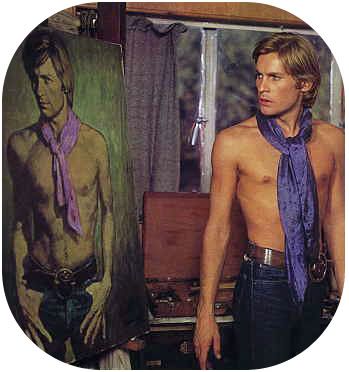 I recently watched Massimo Dallamano’s Dorian Gray for the third or forth time and I was inspired to write about the movie. When the opportunity to contribute to Neil’s Trashy Movie Celebration Blog-a-thon arrived I figured a review of the film would be the ideal contribution since it definitely qualifies as a trashy movie - eurotrash to be exact - and it’s also a personal favorite. Oscar Wilde’s classic tale of a vain, wealthy and beautiful youth who’s sins are preserved in a portrait that ages horribly while he remains young, has been adapted for the screen many times. But I don’t think any movie except Massimo Dallamano’s 1970 film has been able to really capture the decadence of Wilde’s original story. Dallamano set his film version of Dorian Gray in the present, which at that time was the height of the sexual revolution in the late sixties. This gave the director ample opportunity to explore the world of swingers, uninhibited sex and gender bending through the eyes of the curious Dorian Gray. The movie stars the attractive German actor Helmut Berger who made a name for himself in some of Luchino Visconti’s best films including The Damned, Ludwig and Conversation Piece, but he also appeared in many European thrillers and various other trashy movies such as the notorious Salon Kitty. The critics have never been too kind to Berger, which is a shame because when he’s good, he’s very very good and when he’s bad, he’s still a lot of fun to watch. Helmut Berger has what so many actors lack today,charisma and screen presence. Massimo Dallamano couldn’t have picked a better actor to play the vain and self absorbed Dorian Gray. Helmut Berger is clearly enjoying himself in the role and it’s easy to believe that women and men of all ages and sexual persuasions are attracted to him. Berger’s erotic persona and fluid sexuality are used to their fullest extent in Dorian Gray and the audience is easily able to project their own fantasies into the movie if they’re willing. The film opens with a shot of Dorian’s blood-stained hands signaling what’s to come and then we’re immediately taken to a cabaret where a drag queen is performing as Dorian and his companions watch. When the drag queen strips down to reveal sexy black lingerie, you know you’re in for a wild ride. It’s impossible to watch the opening moments of Dorian Gray and not be reminded of Helmut Berger’s own drag performance in Visconti’s The Damned where he impersonated Marlene Dietrich. The Damned was released a year earlier and Dallamano’s sly tribute to Helmut Berger’s earlier performance in Visconti’s film acts as a wonderful introduction to Dorian Gray. 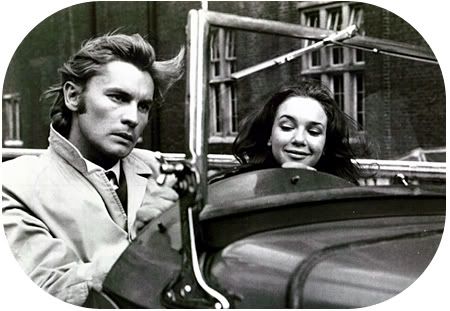 Dorian’s friend Basil Hallward is played by the veteran British actor Richard Todd. Basil is the artist who paints Dorian’s doomed portrait and Richard Todd is convincing as Dorian’s concerned and more mature friend. Thanks to Basil, Dorian is introduced to the much more conniving and depraved Henry Wotton who’s brilliantly brought to life by another veteran British actor, the great Herbert Lom. Henry and the beautiful Alice (Maria Rohm) introduce Dorian to the underside of high-society and encourage Dorian’s hedonistic lifestyle. As the film progresses Dorian meets his first love interest in the tragic figure of an aspiring Shakespearean actress named Sybil Vane. Sybil is played by the pretty Swedish actress Marie Liljedahl who’s mostly remembered for the erotic films she made including Jess Franco’s Eugenie. In Dorian Gray we’re asked to believe that Marie Liljedahl is an innocent virgin seduced by the devilish Dorian and it actually works. Thankfully Dallamono doesn’t bore us with their courtship. Dorian and Sybil seem to fall in love at first sight and their relationship quickly turns sexual. The audience knows they’re in love because key lines from Shakespeare’s play Romeo & Juliet are played over and over again in the background as the two lovers gaze into each other’s eyes and roll around in bed together. Sybil devotes herself to Dorian, but after he falls in love with his own portrait, Dorian can really only be faithful to himself. Under Henry’s influence Dorian seems to forget his feelings for the naive Sybil and begins to dabble in the decadent lifestyle that will soon destroy him. At first Dorian’s passions are rather mild, and include occasional make-out sessions with wealthy socialites, as well as fancy parties with expensive foods and lots of booze. Sybil doesn’t appreciate Dorian’s upper-class friends or approve of their lifestyle, and her jealousy turns to delirium when she notices other women flirting with Dorian. After Sybil suddenly kills herself in an act of desperate passion, Dorian succumbs to his most depraved desires. He claims that he feels nothing after Sybil’s death, but Dorian seems to want to bury his grief in random sexual encounters, yacht parties and go-go clubs. He visits bath houses with Herbert Lom, cruises the docks for sailors and seduces a wealthy elderly lady in a horse barn. The Dorian in Massimo Dallamano’s movie has no inhibitions and we get to enjoy his decadent adventures as they’re exposed. 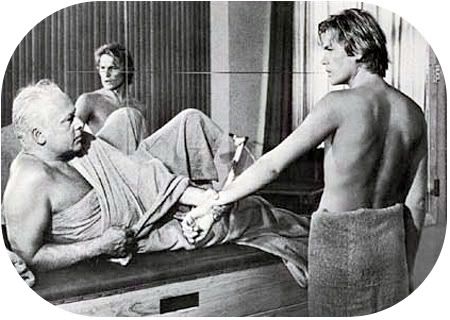 There’s an unusual voyeuristic element added to the film after Dallamano introduces a pretty female photographer into the story. The photographer starts following Dorian around and snapping photographs of him whenever she can. She seems to become Dorian’s constant companion and helps him blackmail his friend Alan (Renato Romano) by snapping photos of Alan’s lovely wife (Margaret Lee) and Dorian together in bed. As you may have noticed by now, many of the actors in Dallamano’s film are regulars in Jess Franco’s movies. I’ve read that Franco was originally supposed to direct Dorian Gray before Massimo Dallamano took over so it’s not surprising that the movie’s cast resembles the cast of a Franco film. It would have been interesting to see what Franco could have done with the story and the cast, but Dallamano’s a skilled director, writer and cinematographer and his talents are on full display in Dorian Gray Dallamano’s film is fairly faithful to Wilde’s original story and where previous film adaptations rarely suggested any of the sexual decadence that Wilde could only hint at in his book, Dallamano’s movie revels in it. Critics have called the film trashy and lifeless. The movie is undoubtedly trashy, but it’s anything but lifeless, especially when it’s compared to other film adaptations of Oscar Wilde’s original story Oscar Wilde was part of the Aesthetic Movement in British literature, which developed the “cult of beauty” and believed that the arts should offer cultivated sensual pleasures instead of morality and sentimentality. The British Aesthetic movement stressed the importance of symbolism and suggestion rather than statement. Intentional or not, Dallamano’s film follows an aesthetic that would have made Wilde proud. The movie celebrates the fashions, decadent lifestyles and sexual freedoms of the times that it was made in with lots of style and very little sentimentality. The beautiful Dorian and the sensual pleasures he indulges in are captured with an unflinching eye and no concern for morality. 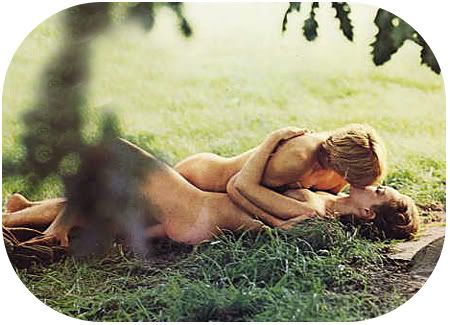 Of course in some ways Wilde’s Dorian Gray was a statement against everything the Aesthetic Movement stood for. The story of Dorian Gray celebrates decadence just as it criticizes its indulgences. As Dorian’s eventual end approaches he is forced to pay for his sins, but the joy of traveling with Dorian on his hedonistic journey is not lost in Massimo Dallamano’s film as it is in so many other movie adaptations. One of the most interesting things Dallamano does with Dorian is to wrap him in Zebra fur. Dorian has zebra drapes on his windows and zebra fur rugs on his floors. By the end of the film Dorian is dressed in a floor length zebra fur coat that would make many pimps in 1970 envious. Zebras each have a unique stripe pattern that is similar to a persons fingerprint and a zebra often represents individuality. In occult symbolism a zebra can even suggest knowledge both seen and unseen, and their stripped patterns of black on white or white on black can suggest that what you see is not always what you get. When the zebra appears in your dreams it can even indicate a time of change or represent hidden knowledge that is about to be revealed. I have no idea if the director had anything in mind when he draped Dorian’s body and decorated his home in zebra fur, but I think it’s fascinating to explore what this possible symbolic gesture might suggest. Finally, I can’t talk about Dallamano’s movie without mentioning the exceptionally groovy score by composer Giuseppe De Luca (A.K.A. Peppino De Luca). It adds many layers to the film and it also celebrates the movies most decadent moments with lots of rhythmic flair. Unfortunately the film is only available on VHS at the moment and the quality of the prints that are available are rather awful. Hopefully a DVD company like Blue Underground or Mondo Macabro will rescue Massimo Dallamano’s Dorian Gray and restore it to it’s original splendor. The movie really deserves another look and I think critics will be able to appreciate its eurotrash charms now that over 35 years have passed since it’s original release. The Eurotrash Pinnacle Projectby Cristina Neri | March 22, 2007
David Zuzelo who runs the terrific blog Tomb it May Concern started what he refers to as The Eurotrash Pinnacle Project. It’s an effort to bring together a list of favorite Eurotrash films from every genre imaginable including eurohorror, giallo, eurospy and spaghetti westerns. I recently contributed my own list of Top 10 Eurotrash films with an additional 10 titles tacked on the end for good measure, since selecting only 10 was an impossible task. In my brief commentary for the first 10 films I listed, I used the word “sexy” a lot, which isn’t too surprising since sex often plays an important part in Eurotrash films and some of my favorite actors (Klaus Kinski, Alain Delon, Terence Stamp, Helmut Berger and John Phillip Law) often show up looking very sexy in the movies I mentioned. You can find my list of favorite Eurotrash films now posted over at Tomb it May Concern. Be sure to click on the label link “Eurotrash Film Pinnacle Project” at the bottom of the entry because it will take you to the the rest of the great movie lists contributed by others. | |||||
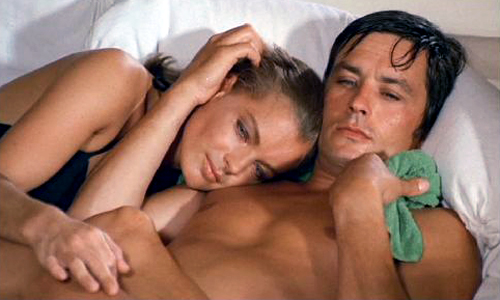

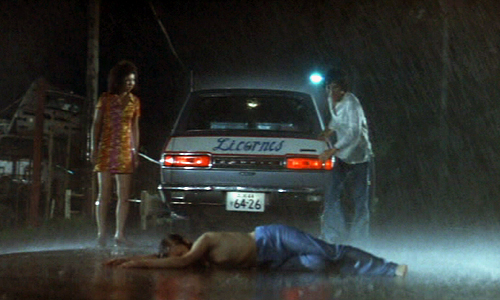

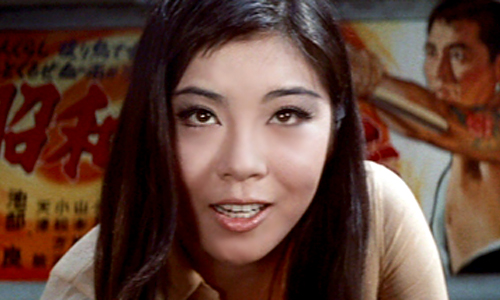
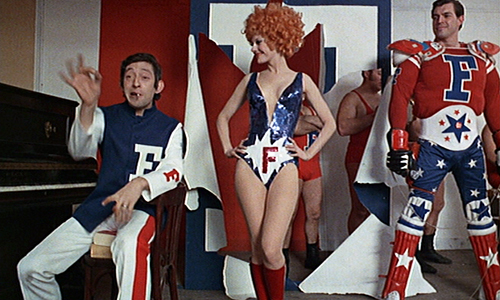

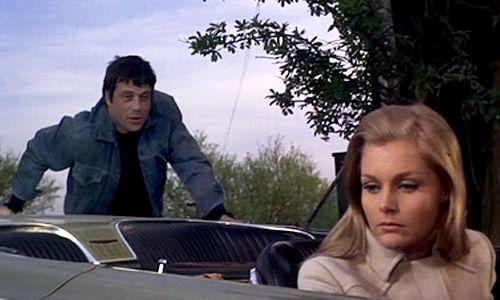


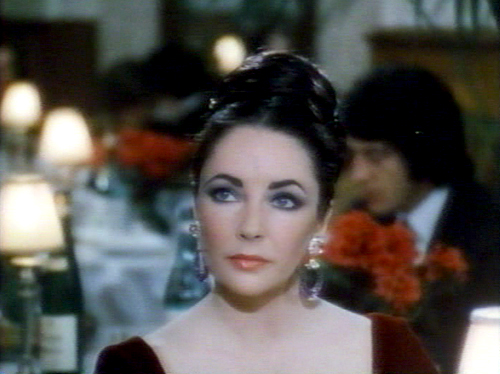

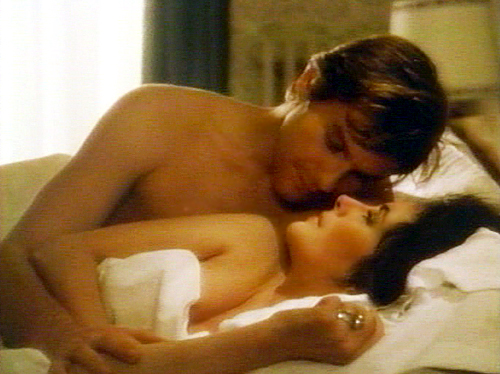

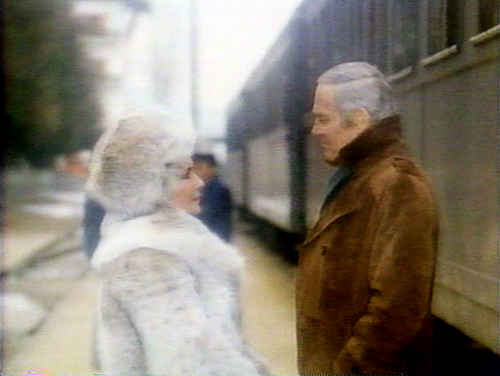


3 comentarios:
Hi!
Just curious
Are you a resident of Venice?
Romantic location
Just being curious
Are you a resident of Venice?
Romantic Location
if! I live in Venice (ITALY)
Publicar un comentario